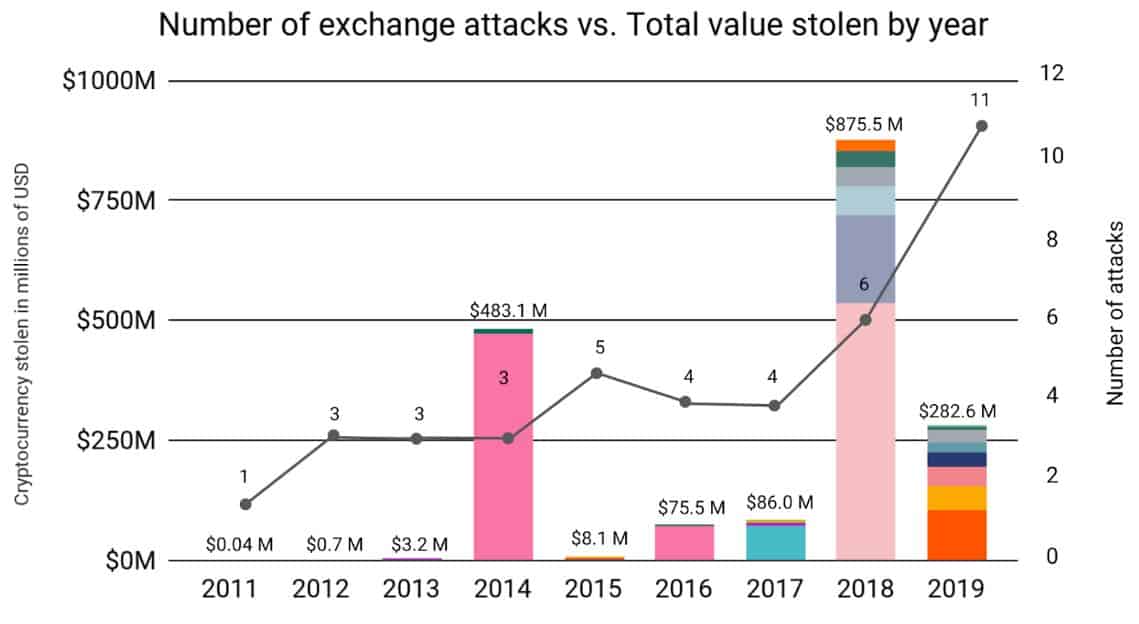The popular blockchain analytics company, ChainAnalysis, recently posted a review of how 2019 related to previous years in terms of cryptocurrency exchange hacks. The data reveals an increased number of attacks, but less stolen money compared to 2018.
More Cryptocurrency Hacks In 2019
The report informs that hackers attempted the most amount of attacks against cryptocurrency exchanges last year. Eleven such efforts were made in 2019, while for comparison, there were only six in 2018. As per information, ever since Bitcoin started trading on exchanges in 2011, the total number of cyberattacks is 40.
The most massive heist recorded in 2019 involved Coinbene. $105 M in 109 different types of ERC-20 tokens were taken from the exchange’s hot wallet, even though they initially denied it.
Cryptopotato reported the second-largest successful cybercrime of UPbit, where the perpetrators took $49 M worth of Ethereum.
Additionally, other affected exchanges include Binance, Bithumb, Cryptopia, Bitrue, and more.

Even though 2019 saw more attacks, the funds which were stolen were considerably less compared to 2018.
It’s worth pointing two of the most serious attacks on cryptocurrency exchanges in history. Firstly, hackers stole $473 million from the Japanese exchange Mt. Gox. More recently, at the start of 2018, another Japanese cryptocurrency trading venue, Coincheck, went through something similar seeing over $500 million worth of NEM tokens taken from its network. The consequences of such events are devastating to any business and its clients.
Improved Operating Measures
Cryptocurrency exchanges have been improving continuously over the last several years. The report notes that they are implementing new, state-of-the-art security measures that should protect them. For instance, they hold fewer funds in less secure hot wallets, exchanges require additional withdrawal authorizations, and monitor transactions more strictly for suspicious activity.
Despite that, the hackers appear much more sophisticated, as well. The paper implies that perpetrators are not only adapting to the newer safety measures, but they are also adopting more efficient ways to launder the stolen funds.
One of the provided examples involved the infamous cybercriminal syndicate Lazarus Group, supposedly linked to North Korea. According to the document, the group now uses more effective phishing ploys, an increased number of mixers and wallets, and faster liquidations.
With that being said, it’s still positive that the funds taken in 2019 are significantly less than in 2018. Yet, as hackers are developing new methods, exchanges need to continue working to deliver maximum security for their users and funds.
 cryptopotato.com
cryptopotato.com